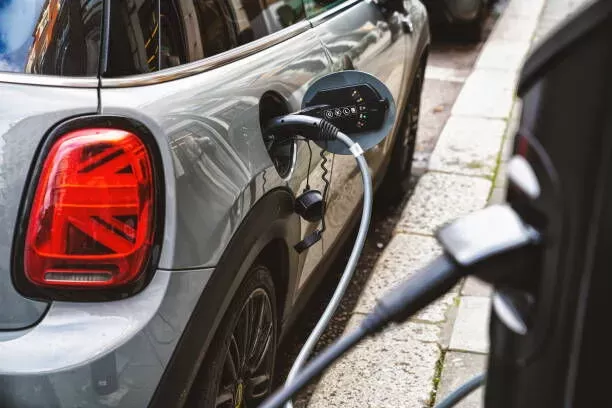Notifications

7 minutes, 36 seconds
-22 Views 0 Comments 0 Likes 0 Reviews

As a professional EV charger manufacturer in China, Topper Company provides reliable electric vehicle charging station equipment and comprehensive solutions to meet all your charging needs.
As electric vehicles (EVs) continue to rise in popularity, understanding the different types of EV charging stations has become increasingly important. Efficient charging infrastructure not only enhances the overall EV ownership experience but also influences convenience, cost, travel flexibility, and battery health.
Whether you're charging at home, at work, or on the road, each type of EV charger serves a unique purpose. In this guide, we’ll explore the three main types of EV charging stations—Level 1, Level 2, and Level 3 (DC fast charging)—and explain how they work, where they’re used, and who they’re best suited for.
Charging your EV at home is one of the biggest advantages of EV ownership. It allows you to start each day with a full battery, eliminates trips to fueling stations, and is typically more cost-efficient than public options.
Voltage: 120V AC (standard household outlet)
Speed: 2–5 miles of range per hour
Time for Full Charge: 22–50 hours for a full battery
Best For: Plug-in hybrid vehicles (PHEVs) or EV owners with short daily commutes
Level 1 chargers come with most EVs and can be plugged directly into any standard home outlet. While slow, they’re practical for overnight use or as a backup option.
Voltage: 240V AC (like an oven or dryer)
Speed: 10–30 miles of range per hour
Time for Full Charge: 4–10 hours for 80%
Installation: Requires professional installation
Best For: Daily EV charging and high-mileage drivers
Most EV owners invest in a Level 2 home charger for faster, more reliable charging. These units often include smart features like scheduled charging, mobile app control, and energy monitoring.
Many employers are now installing EV chargers at workplaces, making it easy for employees to top up their batteries during the workday.
Common Types: Level 1 or Level 2
Benefits:
Convenient daily charging
Reduces reliance on home energy
Extends effective driving range
Employers may also benefit from tax incentives and sustainability credits when they install workplace chargers.
Public EV charging infrastructure is essential for long-distance travel and for drivers who don’t have access to home or workplace charging. These stations vary in speed, cost, and access depending on location and provider.
Speed: 2–5 miles of range per hour
Best For: Long-duration parking (e.g., airports, campuses, municipal lots)
Though uncommon, Level 1 public chargers are sometimes found in older lots or urban garages. They are usually free or very low-cost.
Speed: 10–30 miles of range per hour
Time for Full Charge: 5–11 hours
Common Locations: Shopping centers, hotels, restaurants, hospitals
Access: Often managed via apps like ChargePoint, Blink, or EVgo
Level 2 chargers are ideal for “destination charging”—top up your EV while shopping, dining, or attending events.
Level 3 chargers, or DC fast chargers (DCFC), offer the fastest way to recharge an EV and are essential for road trips and fleet operations.
Voltage/Output: 50kW to 350kW DC
Speed: 80% charge in 15–60 minutes
Best For: Long-distance travel, highway corridors
Compatibility: Not all EVs support Level 3—check for CCS, CHAdeMO, or Tesla Supercharger compatibility
These stations are often found along highways and major routes, enabling fast turnarounds and reducing range anxiety.
As EV technology evolves, ultra-fast DC charging stations delivering 150kW to 350kW are becoming more common.
Speed: Adds up to 200 miles of range in 15 minutes (for compatible EVs)
Requirements: High-voltage infrastructure, advanced cooling, and grid support
Vehicles Supported: Tesla, Lucid, Porsche Taycan, Hyundai Ioniq 5, and other high-capacity EVs
These stations aim to match the speed of traditional fuel stops, paving the way for wider EV adoption.
Just like fuel nozzles differ, EVs use various charging connectors. Make sure your vehicle and charger are compatible:
| Connector Type | Use Case | Common Vehicles / Regions |
|---|---|---|
| J1772 (SAE) | Level 1 & Level 2 AC | North American standard |
| CCS (Combo) | Level 3 DC Fast Charge | Europe & North America (new standard) |
| CHAdeMO | Level 3 DC Fast Charge | Older Nissan Leafs, some Mitsubishis |
| Tesla Plug | All levels (proprietary) | Tesla vehicles (adapters available) |
Modern EV chargers—especially public and commercial ones—come with smart features:
Real-Time Availability: Check charger status via app
Remote Access: Start, stop, or schedule charging from your phone
Payment Options: RFID cards, mobile apps, per-session or per-kWh billing
Load Balancing: Optimize power usage for multiple EVs
Energy Scheduling: Charge during off-peak hours for lower electricity costs
Smart charging is especially beneficial for multi-EV households, businesses, and fleet operators.
Choosing the right EV charging solution depends on your driving habits, daily mileage, and where you typically park. For most people, home Level 2 charging offers the best mix of speed, convenience, and affordability. Workplace charging adds daily flexibility, while public and DC fast charging enable longer trips and help support the broader EV ecosystem.
As EV technology and infrastructure continue to evolve, staying informed about your charging options ensures you’ll always be ready to hit the road—efficiently, economically, and confidently.Know more about Google SEO Directory
China EV Chargers EV Charger Manufacturer EV Charging Solutions

